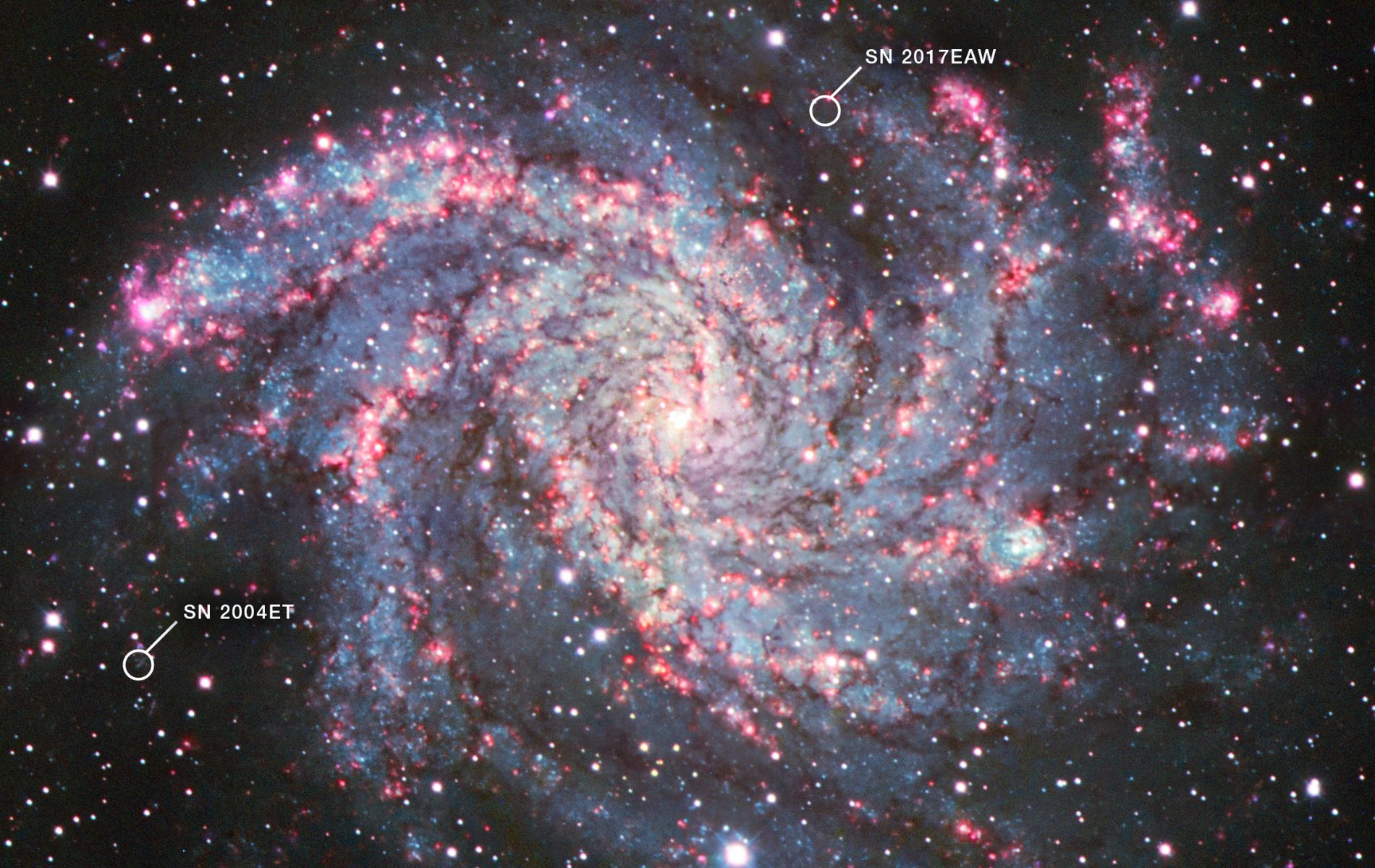Dying stars fill the universe with large amounts of dust, from which new stars and planets are born.
Matter is a building block for many things in the universe – planets in particular. As dust spreads through the universe, it brings essential elements with it, so that new planets see the light of day. But where exactly does this rich cosmic dust come from is a question that has puzzled astronomers for decades. a New study Now lift a corner of the veil.
supernova
It has been said in the past that cosmic dust can come from supernovae: exploding and dying stars. After the dying star explodes spectacularly, the remaining gas expands and cools, forming dust. “However, direct evidence of this phenomenon is limited so far,” said study leader Melissa Shahbandeh. “So far we have only been able to study the dust in a relatively nearby supernova, SN 1987A, which is about 170,000 light-years from Earth.” The fact that we have no more observations is easily explained. “If the gas is cooled enough to form dust, that dust will only be detectable at mid-infrared wavelengths, if the instrument is sensitive enough,” Shahbandeh explains.
James Webb
So Shahbandeh and her colleagues decided to use the powerful James Webb telescope for a new study. Web equipped Infrared mid tool; A highly sensitive instrument consisting of a spectrometer and a camera. The researchers focused on two more distant type II supernovae, SN 2004et and SN 2017eaw. These supernovae are located in the barrier spiral galaxy NGC 6946, about 22 million light-years away.
More about type II supernovae
A type II supernova occurs when a massive star – from about 8 to 50 solar masses – runs out of nuclear fuel and collapses, exploding in a violent explosion of energy and matter. Typically, these events are observed in the arms of spiral galaxies, which contain clusters of massive young stars, which are essential for a type II supernova to occur. The star’s outer core is gravitationally collapsing at a staggering 250 million kilometers per hour – or 23 percent of the speed of light. In just ten seconds, such an explosion releases as much energy as the Sun generates during its ten billion year life.
The new observations reveal that both supernovae do indeed spew large amounts of dust. For example, researchers have discovered huge mounds in the projectiles of these objects.
Huge piles of dust
And it comes to a lot of dust. Near SN 2004et, the researchers found more than 5,000 Earth masses of dust. “This is the highest mass of dust observed near a supernova since SN 1987A,” said Uri Fox. This may just be the tip of the iceberg. While Webb’s powerful instruments can detect cold dust, cooler dust may go undetected, radiating further into the electromagnetic spectrum and being blocked by outer layers of dust.
dust factories
Either way, the study definitively shows that exploding stars do indeed produce huge amounts of dust. This confirms the suspicion of astronomers. In fact, it solidifies their theory. Astronomers already thought supernovae could produce dust, but the question remained of how much of it could survive the internal shocks bouncing back from the explosion. But the massive volumes now seen near SN 2004et and SN 2017eaw indicate that they are easily subjected to these violent shock waves. This proves that supernovae are indeed important dust factories.
Distant young galaxies
This means that dying stars fill the universe with large amounts of cosmic dust, from which new stars and planets are born. This also explains where all that dust came from in the early galaxies. Astronomers know that young, distant galaxies are full of dust. However, such galaxies contain very few intermediate stars – such as our Sun – that could have provided these quantities. But more massive, short-lived stars may have been plentiful. And when they died, they probably filled the galaxies with large amounts of dust. This indicates that supernovae may also have played a major role in providing dust for the early universe.
Thanks to James Webb, astronomers have been able to answer another important cosmic question. And the results may be an introduction to more. For example, the study shows how supernovae and their dust production can be studied using Webb, paving the way for further research. “For example, we’d like to better understand what this dust tells us about the core of a star that exploded,” says Fox. “Thanks to our results, I believe other scientists will come up with innovative ways to look at these dust supernovae in more detail in the future.”







